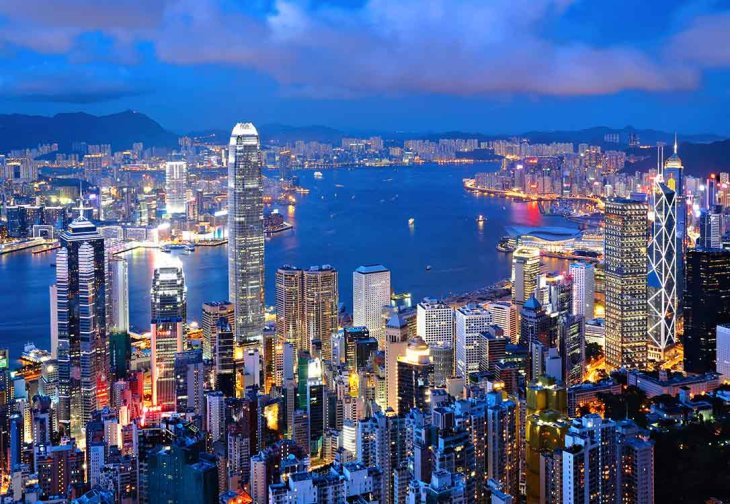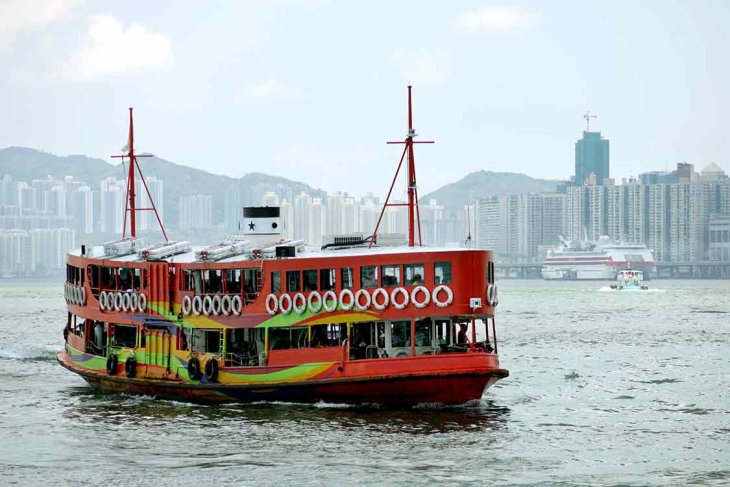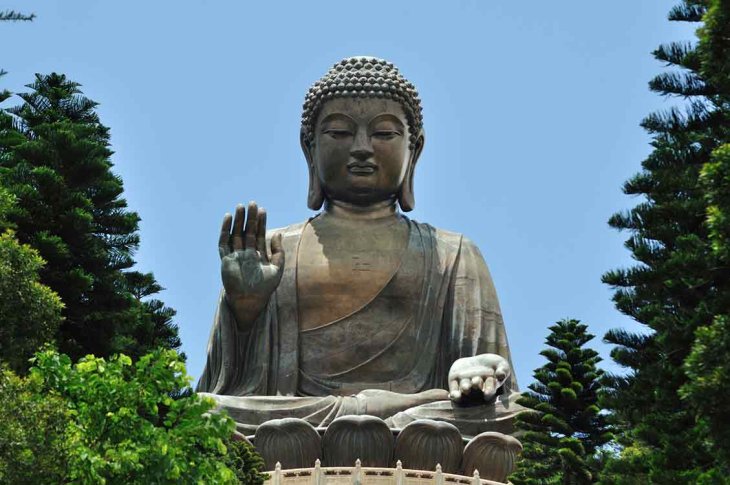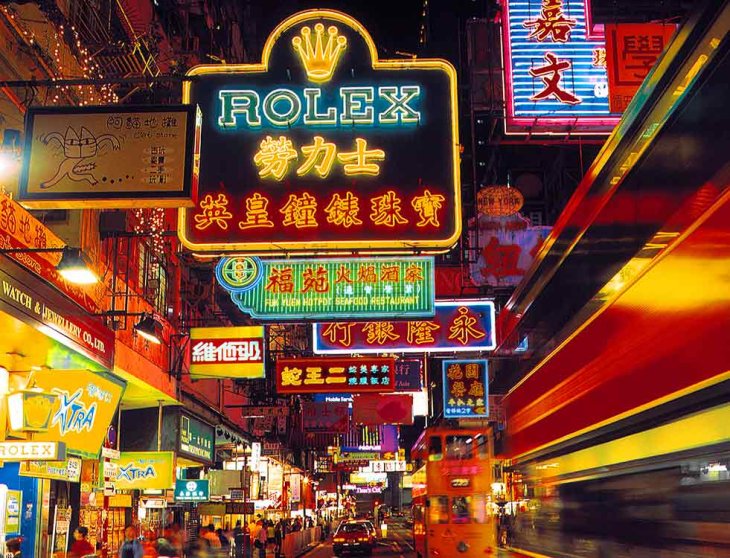
Once part of the British Empire, the autonomous territory of Hong Kong was handed back to the Chinese in 1997, bringing with it a rich and colourful history that still attracts more visitors than any other tourist destination.
Hong Kong became a British colony after the First Opium War in 1842 and remained under British rule for around a century until it was temporarily taken over by the Japanese during World War II.
After Japan's surrender, Britain resumed control and opened negotiations with China by the 1980s that resulted in the 1984 Sino-British Joint Declaration and eventual independence.
The push for being handed back to China was largely built on Hong Kong's foundation of financial success, which developed during the 1970s. The territory has since emerged as the 44th-largest economy in the world, leaving it in the top 10 for GDP per capita.
The city is well known for its skyline and deep natural harbour and has around 7.2 million inhabitants, making it one of the most densely populated metropolises on earth.
Hong Kong's infrastructure is just as dense, mainly due to the limited land available. As a result it is awash with modern architecture and more high rises than any other city in the world. That density has unsurprisingly had its downsides, with air pollution a significant problem in the city, mainly due to loose emission standards resulting in a high level of atmospheric particulates. However, residents of Hong Kong still enjoy one of the longest rates of life expectancy in the world.
Currency
Hong Kong uses the Hong Kong Dollar, which roughly equates to 0.091p and is the 13th most traded currency in the world
Customs
When greeting westerners, the use of a handshake is the most common form of greeting, although it is usually lighter and many may choose to lower their eyes as a sign of respect. There is no need to return this gesture, but it is worth bearing in mind that prolonged eye contact during greeting should be avoided.
When attending a large gathering, you are expected to introduce yourself. However at a smaller function it is polite to wait for your host or hostess to introduce you.
Local, much like other Chinese residents, often have three names: a surname, followed by two personal names.
The first personal name is their father's name and the second personal name is their own name. When addressing someone new, use their honourific title and then their surname. If you reach first-name terms, you will often be advised on which one to use.
Some Chinese people adopt more western names and may ask you to call them by that name.
Getting Around

Hong Kong has a very efficient public transport system.
The MTR (Mass Transit Railway) is Hong Kong's subway system made up of ten lines, and you can buy Tourist Passes for HKD65. The MTR also runs to and from the airport, taking just 24 mins to and from Hong Kong Island.
Taxis are very cheap, espeically in comparison with the UK. But beware - taxis do not go everywhere - you need to make sure you get in the correct coloured taxi for the area you want to go to! All taxis can be hailed (except for in restricted areas) and all go to the airport and Disneyland. Red taxis: most of Hong Kong (except for Tung Chung Road on Lantau Island) and on the entire south side of Lantau Island. Green taxis: only service the New Territories. Blue taxis: only operate on Lantau Island.
Buses are incredibly cheap - catch a double decker for great views from the top deck! Fares are based on distance travelled, but you must have the exact change. Luckily, destinations are displayed in both Chinese and English.
Ferries are a fun way to hop between Hong Kong's islands. The Star Ferry is legendary and takes you from Hong Kong Island to Kowloon.
Trams are an old Hong Kong favourite and are a step back in time. Only costing HKD2.30 per journey, but again, have the exact change.
What to see

The scale of Hong Kong's high rises becomes obvious almost immediately. It means that if you see nothing else during your stay, it is best to go to The Peak, which gets its name from being the highest point on Hong Kong island. The tram up to The Peak is an experience in itself! Catch it from Garden Road in Central.
Not only has this been Hong Kong's most exclusive neighbourhood since colonial times, it also offers the best views of what is one of the world's most spectacular cityscapes. From Victoria Harbour all the way to the green hills of the New Territories the view is truly breathtaking. In the early evening, the panorama melts into pink and orange before bursting out as a dazzling galaxy of light, shimmering beneath you.
The skyline is also what draws many visitors to the Tsim Sha Tsui Promenade, which passes the Hong Kong Cultural Centre and the Hong Kong Space Museum and starts at the Clock Tower.
When the sun goes down, visitors can be treated to a stretch of traders opera singers and fortune tellers at the Temple Street Night Market, a popular street bazaar, named after a Tin Hau temple located in the centre of its main drag. This is a place steeped in local traditions and is the perfect place to witness the buzz and excitement of the traditional Chinese market.
Another shopping hotspot is the Ladies Market, which squeezes more than 100 stalls of bargain clothing, accessories and souvenirs on Tung Choi Street, stretching for one kilometre. Stanley Market is also a must-do. The Jumbo Floating Restaurant in Aberdeen is also a sight to behold, and you can pay a local fisherman to take you out on a junk around it.
Lantau Island - the residential hotbed of British expats in the 80s and 90s - also hosts the Po Lin Buddha, and Disneyland.
Where to drink

Lan Kwai Fong is one of Hong Kong’s most popular nightlife hot spots, boasting more than 90 restaurants and bars, allowing it to cater to almost any taste and clientele.
Take a trip to one of the many clubs and you just might bump into a celebrity, such is the reputation for this part of town.
Either get in the thick of the action by perching on a side street bar, head up to the upper floors and watch the organised chaos below pass you by.
Lan Kwai Fong often hosts carnivals and other celebrations during the major festivals, such as Halloween, Christmas and New Year, and even has its own beer festival.
Whether you're looking for a night on the tiles or a spot of fine dining, you're sure to find something here.
Wanchai is also popular, especially on a Sevens weekend. Carnegie's, Coyote, Devil's Advocate, The White Hart and Joe Bananas can all be found here.

